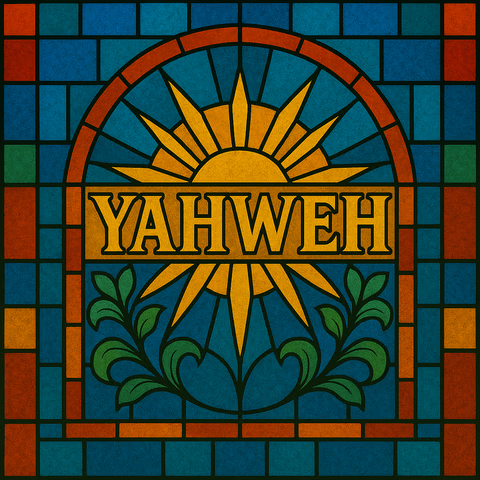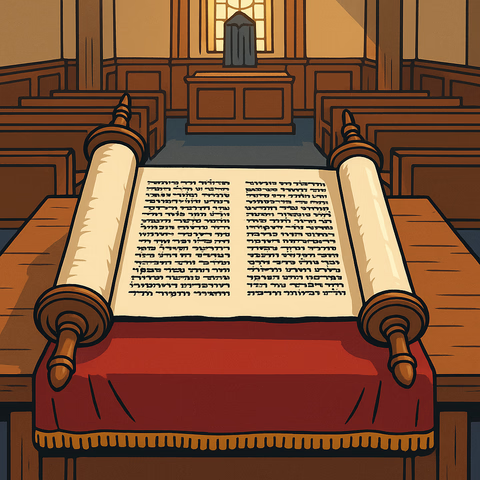
MarYah: An Aramaic Replacement for God’s Name
Many Bible readers are familiar with ‘Lord’ being used as a substitute (a circumlocution) for God’s Name, Jehovah/Yahweh, in both the Hebrew Old Testament and the Greek New Testament. But what about the Aramaic-speaking Jews? How did they handle God’s Name?
Starting in the exile
The Jewish exiles found themselves in Babylon from the 6th century BC onwards. During this period, Aramaic became their everyday language, gradually replacing Hebrew for common communication. This shift continued under the Persian Empire, which later conquered Babylon and even adopted Aramaic as its official administrative language across its vast territories.
It was in this Aramaic-speaking world that the need arose for a reverential way to refer to God’s Name without uttering it directly. They may have used a few methods, but the one that stand out is the word MarYah, which was an existing word for ‘Lord’ or ‘Highest Lord’. It’s reveals their reverence for the Name, and how it was honored even when it wasn’t spoken aloud.
In Aramaic, the word for 'Lord' was usually Marah (ܡܪܐ / מרא), which was sometimes abbreviated to be even shorter. The longest and most reverential version was MarYah (ܡܪܝܐ / מריא). While Marah could refer to both YHWH and ordinary human 'lords,' MarYah was reserved almost exclusively for God, acting as a clear circumlocution for God’s Name.
This practice wasn’t a Jewish invention; MarYah was used in Syrian and Babylonian royal courts as a term for the highest lords. However, for the Jews, it may have also been a neat coincidence that MarYah ends with ‘Yah’, subtly reminding everyone of the shortened form of God’s Name. So, it might have sounded like ‘Lord Yah,’ even if that wasn’t its literal meaning.
Why does this matter to us, today? Well, once we understand this, we see that the Aramaic text of the New Testament contains many instances of MarYah being used as a circumlocution for God’s Name. This shows that God’s Name really does appear there. Sometimes it’s just used as a title for Jesus rather than a proper noun, but most of the time, it’s a direct replacement for God’s Name.
When combined with the so-called ‘grammar error’ in the Greek New Testament, we have two main ways of seeing where Jehovah/Yahweh is referred to in the New Testament.
Articles in this series
- Our introduction to the Aramaic MarYah (this page)
- The Aramaic MarYah and Jesus
- The Aramaic MarYah and God
- The Aramaic MarYah and uncertain uses
- A list of every use of MarYah in the Aramaic New Testament
How to write it in English?
The word is literally ܡܪܐ in the Estrangello Edessa script (the more common script used to write Aramaic), but sometimes spelled using the Hebrew script as מרא. Different sources will transliterate the word into our alphabet in different ways:
- mryˀ
- marya)
- māryā
- mry)
And none of these include vowels! If we included them, the variations would be even greater.
We choose to spell it as MarYah because it’s easiest to read, say, and type. It doesn’t include special characters or symbols like ‘)’ which represents the ‘ah’ sound, which someone might think is a typo! And using CamelCase shows the different syllables.
MarYah in the Aramaic New Testament
The term MarYah is used extensively in the Aramaic New Testament. Here’s a breakdown of its occurrences and how it’s typically translated:
- MarYah (Lord) 94 times
- d'MarYah (of Lord) 82 times
- b'MarYah (in Lord) 11 times
- d'alMarYah (of to/for Lord) 2 times
- l'MarYah (to/for Lord) 19 times
- w'MarYah (and Lord) 2 times
All of this information comes from the excellent Peshitta Tool run by Dukhrana Biblical Research.
Not always God’s Name
It’s important to understand that not all instances of MarYah necessarily replace God’s Name. While it serves as the main circumlocution for YHWH, MarYah is also an ordinary Aramaic word that can simply mean ‘Lord’ or ‘Highest Lord’ in a general sense.
When the Aramaic New Testament applies it to Jesus, for instance, it’s used as a title describing his role and authority, rather than as a proper noun (a name). Indeed, the number of times it appears to be a ‘name’ for Jesus is zero.
This distinction is often clarified by the context or by cross-referencing with the Greek New Testament. For example, the phrase ‘Lord God’ consistently refers to the Father, while ‘Lord Jesus’ exclusively describes Jesus, even when using MarYah. Recognizing this helps us understand the nuances of MarYah usage in Aramaic texts.
Commentary on each use
We have published commentaries on every use of MarYah in the Aramaic New Testament.
We’ve divided them into three categories:
Also:
God’s Name
 God’s Name
God’s Name Circumlocutions for God’s Name
Circumlocutions for God’s Name God’s Name in Christian Texts
God’s Name in Christian Texts MarYah: An Aramaic Replacement for God's Name
MarYah: An Aramaic Replacement for God's Name Was God’s Name Restored Incorrectly in Hebrew?
Was God’s Name Restored Incorrectly in Hebrew? Timeline of God's Name
Timeline of God's Name
Also see our Articles index and our About section.